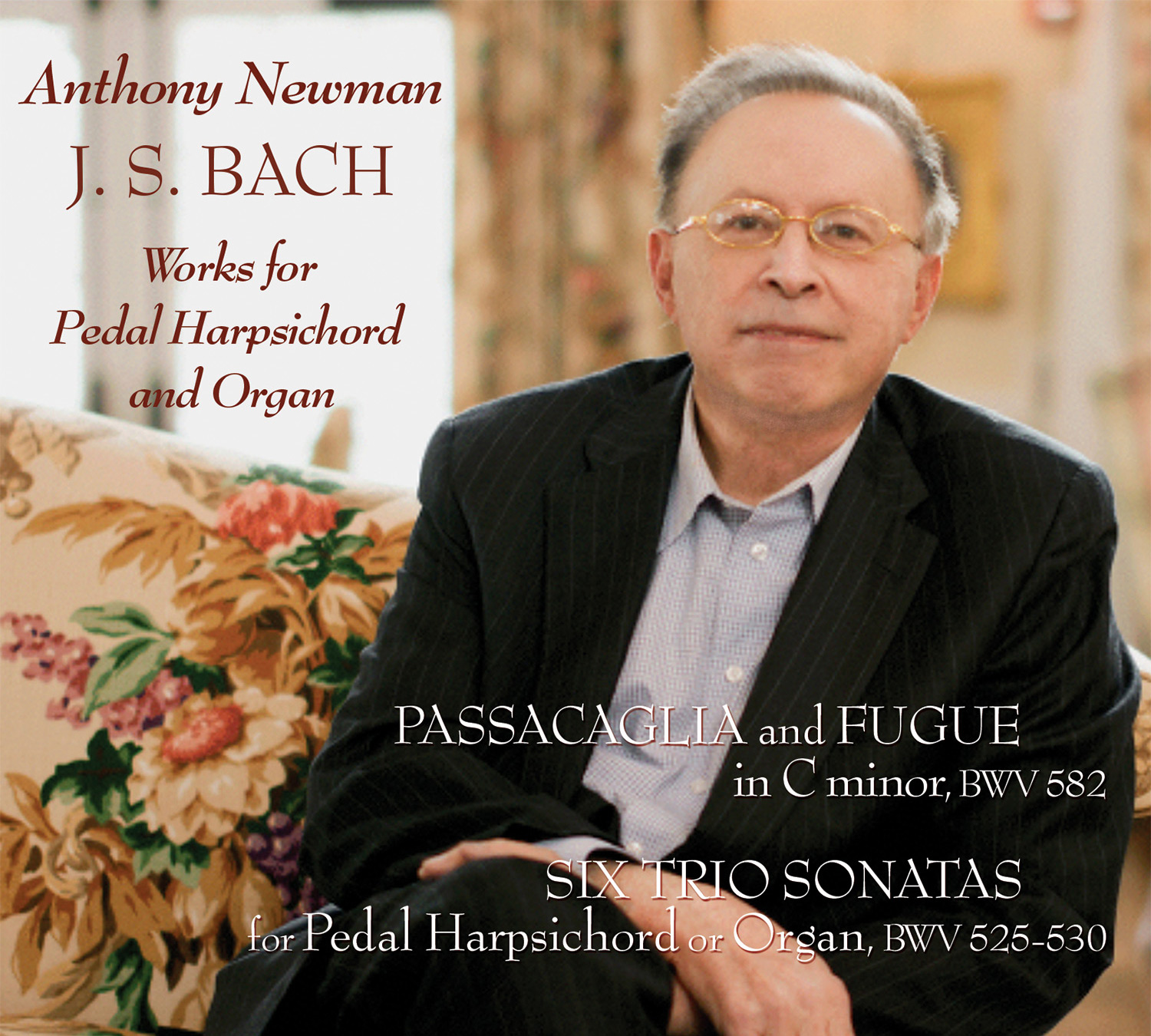Pedal Harpsichord by John Challis
By Stewart Pollens, Associate Conservator of Musical Instruments
Department of Musical Instruments, Metropolitan Museum of Art
The pedal harpsichord featured in this recording was made in 1968 by John Challis for the Canadian organist Gordon Jeffery. John Challis, the first American-born harpsichord maker of the early-music revival, was born in South Lyon, Michigan on January 9, 1907 and died in New York on September 6, 1974. In 1928 he received a Dolmetsch Foundation Scholarship, which enabled him to travel to Haslemere, England to serve an apprenticeship in harpsichord making with Arnold Dolmetsch. Upon his return to the United States in 1930, he established a workshop in Ypsilanti, Michigan. In 1966 he moved to New York City, where this instrument was constructed.
Pedal harpsichords are known to have been used in the eighteenth century, but none from this period survives. Despite the lack of a historical model, the noted organist E. Power Biggs commissioned Challis to design and build one in the early 1960s. Biggs supplied the basic specifications and Challis worked out the details based upon his prodigious understanding of harpsichord design. The Biggs pedal harpsichord was completed in 1964 and was used to make a number of highly regarded LP recordings.
The pedal harpsichord completed Gordon Jeffery is more complex than the earlier one made for Biggs. It consists of two discrete instruments: a two-manual harpsichord having 16’, 8’, and 4’ stops on the lower manual and 8’ and 4’ on the upper manual, plus harp stops on the 8’ of both the upper and lower manuals, and an independent pedal harpsichord equipped with 16’, 8’, 4’, and 2’ stops, with a harp stop on the 8’, plus a Venetian swell. The stops of both instruments are controlled by fifteen foot pedals (half-hitches are available for reduced volume, and a lower-manual forte pedal simultaneously engages the full pedal); hand stops are also provided. There is no manual coupler, but both 8’ choirs of strings are accessible to the lower manual by means of separate sets of jacks. The manual keyboard compass is FF-g3; the concave, radiating (AGO standard) pedal board has a compass of C-g1.
Challis did not follow classical harpsichord design and championed the use of modern materials. He was one of the first to make the jacks and other mechanical parts of synthetic materials, and in his later instruments he employed a cast aluminum frame and aluminum wrestplank rather than the traditional wood framing. He took the daring step of making his soundboards of honeycombed aluminum (a material originally designed for use as aircraft skin) with bridges of channeled aluminum drilled out for lightness. The aluminum soundboards had approximately the same weight and stiffness-to-weight ratio as spruce but had the advantage of being completely resistant to cracking and warping due to changes in humidity. With metal framing and soundboards, his instruments offer unparalleled tuning stability, a virtual necessity in an instrument of the pedal harpsichord’s complexity (there are a total of eight choirs of strings in the instrument used in this recording). Challis did not use conventional music wire but somewhat softer stainless steel wire and as well as delicate overspun strings of annealed steel and brass for many of the bass notes and all of the strings of the 16’ in the pedal division. The Delrin plectra used in this recording were fitted posthumously in 1983; however, the pedal 16’ retains most of the original leather plectra. The rich and varied tone colors and organ-like sustaining power of this instrument are not so much due to the unconventional materials used in its construction as to the non-traditional scaling and widely varied plucking points. Challis’s earlier instruments made with conventional wood soundboards and bridges exhibit similar tonal characteristics.
By Stewart Pollens, Associate Conservator of Musical Instruments
Department of Musical Instruments, Metropolitan Museum of Art
The pedal harpsichord featured in this recording was made in 1968 by John Challis for the Canadian organist Gordon Jeffery. John Challis, the first American-born harpsichord maker of the early-music revival, was born in South Lyon, Michigan on January 9, 1907 and died in New York on September 6, 1974. In 1928 he received a Dolmetsch Foundation Scholarship, which enabled him to travel to Haslemere, England to serve an apprenticeship in harpsichord making with Arnold Dolmetsch. Upon his return to the United States in 1930, he established a workshop in Ypsilanti, Michigan. In 1966 he moved to New York City, where this instrument was constructed.
Pedal harpsichords are known to have been used in the eighteenth century, but none from this period survives. Despite the lack of a historical model, the noted organist E. Power Biggs commissioned Challis to design and build one in the early 1960s. Biggs supplied the basic specifications and Challis worked out the details based upon his prodigious understanding of harpsichord design. The Biggs pedal harpsichord was completed in 1964 and was used to make a number of highly regarded LP recordings.
The pedal harpsichord completed Gordon Jeffery is more complex than the earlier one made for Biggs. It consists of two discrete instruments: a two-manual harpsichord having 16’, 8’, and 4’ stops on the lower manual and 8’ and 4’ on the upper manual, plus harp stops on the 8’ of both the upper and lower manuals, and an independent pedal harpsichord equipped with 16’, 8’, 4’, and 2’ stops, with a harp stop on the 8’, plus a Venetian swell. The stops of both instruments are controlled by fifteen foot pedals (half-hitches are available for reduced volume, and a lower-manual forte pedal simultaneously engages the full pedal); hand stops are also provided. There is no manual coupler, but both 8’ choirs of strings are accessible to the lower manual by means of separate sets of jacks. The manual keyboard compass is FF-g3; the concave, radiating (AGO standard) pedal board has a compass of C-g1.
Challis did not follow classical harpsichord design and championed the use of modern materials. He was one of the first to make the jacks and other mechanical parts of synthetic materials, and in his later instruments he employed a cast aluminum frame and aluminum wrestplank rather than the traditional wood framing. He took the daring step of making his soundboards of honeycombed aluminum (a material originally designed for use as aircraft skin) with bridges of channeled aluminum drilled out for lightness. The aluminum soundboards had approximately the same weight and stiffness-to-weight ratio as spruce but had the advantage of being completely resistant to cracking and warping due to changes in humidity. With metal framing and soundboards, his instruments offer unparalleled tuning stability, a virtual necessity in an instrument of the pedal harpsichord’s complexity (there are a total of eight choirs of strings in the instrument used in this recording). Challis did not use conventional music wire but somewhat softer stainless steel wire and as well as delicate overspun strings of annealed steel and brass for many of the bass notes and all of the strings of the 16’ in the pedal division. The Delrin plectra used in this recording were fitted posthumously in 1983; however, the pedal 16’ retains most of the original leather plectra. The rich and varied tone colors and organ-like sustaining power of this instrument are not so much due to the unconventional materials used in its construction as to the non-traditional scaling and widely varied plucking points. Challis’s earlier instruments made with conventional wood soundboards and bridges exhibit similar tonal characteristics.



